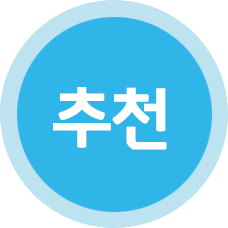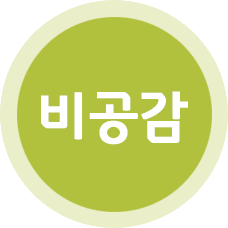

Determiners are a kind of noun modifier; they precede and are necessarily followed by nouns. While adjectives perform a similar function, the term ‘determiner’ refers to a relatively limited set of well-established words that can be said to ‘mark’ nouns.
한정사는 명사를 수식해주는 것의 한 종류다; 그것들은 명사보다 앞서며 반드시 명사를 따라와야 한다.
형용사와 유사한 반면, '한정사'라는 용어는 'mark' nouns 라 불리는 확고한 단어들의 비교적 제한된 것(set/집단)을 나타낸다.
The function of determiners is to ‘express reference’; i.e. they clarify what a noun is referring to. For example when one says ‘that box’, the listener knows which box is being referred to.
한정사의 기능은 '참조(?)를 표현'하는 것이다. 그것은 명사가 언급하는 것을 명확하게 해준다. 예를 들면 누군가가 '저 박스'라고 말할 때, 청자는 그 박스가 언급된 것임을 안다. (의역)
There are many types of determiners:
다양한 종유의 한정사가 있다.
1. Articles <관사>
2. There are three articles: a, an, and the. < a, an, 그리고 the라는 3개의 관사가 있다>
Indefinite Articles <부정관사>
A and an are indefinite articles that serve the same purpose, but they cannot be used interchangeably, because ‘a’ is only used before words that begin with consonants, and ‘an’ is used only before words that begin with vowels. (Note: ‘an’ before ‘h’ when it is silent, as in ‘hour’ and ‘honour’; ‘a’ before ‘u’ and ‘eu’ when they sound like ‘you’, as in ‘European’ and ‘university’.
A와 an은 같은 목적을 수행하는 부정관사다, 하지만 그것은 서로 바꿔서 사용할 수 없다, 왜냐하면 a는 오직 자음으로 시작하는 단어 앞에 사용한다, 그리고 'an'은 오직 모음으로 시작하는 단어 앞에 사용한다. (note : 묵음인 h 앞에서는 'an', hour(시간), honour(존경)/ u와 eu 앞 예를 들면 you와 European(유럽의), 그리고 university(대학) 앞에는 a를 사용)
The uses of the indefinite article are as follows:
Note:
Definite Article <정관사>
‘The’ is known as the definite article in English. Its uses are as follows:
'The'는 영에어서 정관사로 알려져있다. 그 사용법은 다음과 같다.
a. 무언가가 이미 언급된 것을 업급할 때. 예를 들면 오늘 나는 이쁜 소녀를 상점에서 봤어. 하지만 '그'소녀는 나를 보지 않았어.
b. 대화가운데 참여한 두 당사자가 논의되어지고 있는 것을 알고 있을때(말 드럽게 어렵네...) '화장실은 어딨지?
c. 특별한 무언가를 언급할 때
d. 최상급이나 서수와 함께
e. 지리적인 '무리의 사람들'이나 연령층을 언급할 때(이건... 대충 뜻만..하하하)
3. Quantifiers <수량사> <-all, both 등과 같은...
See article on Quantifiers.
4. Demonstratives <지시사>
This, that, these and those are known are demonstratives; they describe the position of an object, seen from the speaker’s viewpoint.
This and these (used for singular and plural nouns respectively) refer to objects that close by. For example Whose car is this? Whose cars are these?
That and those (used for singular and plural nouns respectively) refer to objects that are further away. The closeness can be physical or psychological. For example Who lives in that house?
5. Numbers <수사>
Numbers are cardinal (one, two, three, etc) and ordinal (first, second, third, etc). Cardinal numbers are adjectives that indicate quantity (There are fives apples on the table), and ordinal numbers indicate rank or order (This is the first time for me on a plane).
6. Distributives <????????????????????> 전치한정사인가..??
The words all, both, half, each, every, either and neither are known as distributives.
All, Both, Half
These three words can be used in the following ways:
All +
uncountable noun <All + 불가산 명사>
Don Bradman is the greatest batsman of all time. 'Don Bradman은 역대 최고 타자다'
‘the’ + uncountable noun/countable noun in plural form <the + 불가산 명사/가산명사 in 복수형>
We have all the time in the world. '우리 세상의 모든 시간을 가져요'
All the people in the hall went quiet. '홀 안에 모든 사람이 조용히 (지나)갔다.'
‘my’, ‘your’, etc + uncountable noun/countable noun in plural form <my/you + 불가산명사/가산 명사 in 복수형>
All my life I have been waiting for this moment. '내 모든 삶내내 나는 이 순간을 기다려왔다'
All you friends have been invited to the party. '네 모든 친구들이 파티에 참석했어'
‘this’, ‘that’ + uncountable noun/‘these’, ‘those’ + countable noun in plural form <
Look at all this dust!
I do not have time for all these formalities.
Both +
‘the’ /‘my’, ‘your’, etc/‘these’, ‘those’ + countable noun in plural form (note: used only when two objects are being referred to)
Both the dogs have passed away.
Both my ankles have been hurting since I jumped from the balcony.
Both these books must be returned within the week.
Half +
‘a’ + uncountable noun
We bought half a kilo of rice.
‘the’/‘my’, ‘your’, etc/‘this’, ‘that’, ‘these’, ‘those’ + noun
Half the village perished in the floods.
I spent half my inheritance on travelling the world.
You may have half (of) this cake.
Only half (of) those points are relevant.
Each, Every, Either, Neither
See articles.
7. Possessives <소유사> <-my, his, your 같은...
Possessive pronouns and adjectives indicate who an object belongs to.
The pronouns are
mine (first person: This car is mine = I own this car)
yours (second person: This car is yours = You own this car)
his, hers, and its (third person: This cars is his/hers = He/she owns this car).
The corresponding adjectives are
my
your
his, her, and it
8. Difference words <다른 것> <-잘 모르겠지만 other/another
Other and another are ‘difference words’; they refer to something different, or remaining, or more. Other is used with singular and plural nouns, while another is used strictly with singular nouns.
'other'와 'another은 '다른 말'이다. (의역입니다....)
' 그것은 다른 무언가를 언급하거나 남아있거나, 혹은 더 많은 것을 언급한다.
'other'은 단수 혹은 복수 명사와 함께 사용된다. 반면 'another'는 엄격히 단수명사와 함께 사용된다.
What other colours can I get this in?
Is there another colour that this is available in?
9. Defining words <- which/whose
Which and whose are ‘defining words’; they indicate which thing or person is being referred to.
'which'와 'whoss'는 '말을 정의한다'
이것들은 언급된 어는 것이나 어느 사람을 가리킨다.
This is the house which I used to live in as a child.
This is the man whose window you broke.
10. Question words <의문사>
See the article on question words - 의문사편 참조
| 출처 | http://www.englishleap.com/grammar/determiners |



